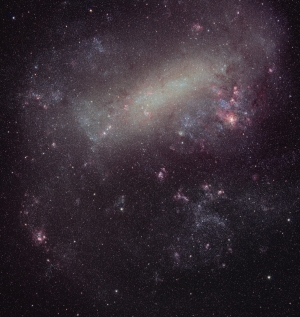The Large Magellanic Cloud, an irregular galaxy.
Click on image for full size
© Loke Kun Tan (StarryScapes)
Related links:
A Matter of Scale - interactive showing the sizes of things, from very tiny to huge - from NSF
Irregular Galaxies
Any galaxy which does not look like an elliptical or spiral is called
an irregular galaxy. Every irregular galaxy is unique in it's
appearance. It doesn't have to look like the others. It just isn't a
spiral or an elliptical.
There are two types of irregulars. Irr I galaxies are similar to
spirals because they have lots of gas and young stars, but they don't
have spiral arms. Irr II galaxies are distorted and strange looking.
Their appearance leads some astronomers to think that Irr II galaxies
may have collided with another galaxy at some time during their lives.
If you live south of the Equator, you may be able to see two irregular type
galaxies in your night sky. The Large and Small Magellanic Clouds are
two very nearby irregular galaxies which are orbitting the Milky Way.
Because they are nearby and fairly bright, they can be seen with the
unaided eye.
You might also be interested in:

When we look up at the night sky, we notice that there are many stars in our sky. Stars must like to live together in star cities - galaxies. Our city of stars is called the Milky Way, and it is home to
...more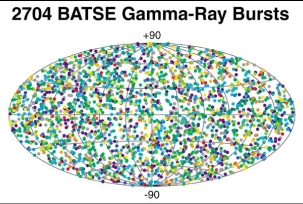
Satellites in the 1960's looked for a type of light called Gamma Rays. They found bursts of Gamma Rays coming from outer space! They can't hurt you. They are stopped by the Earth's atmosphere. We have
...more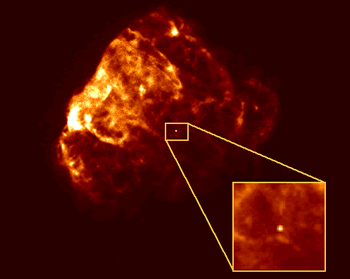
Neutron Stars form when really big stars die. When such a star runs out of fuel its center begins to collapse under gravity. When the center collapses the entire star collapses. The surface of the star
...more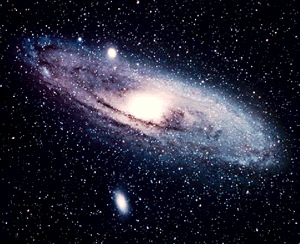
Spiral galaxies may remind you of a pinwheel that blows in the breeze. Like a pinwheel, a spiral galaxy is rotating, and it has spiral arms. Through a telescope or binoculars,a spiral galaxy may look
...more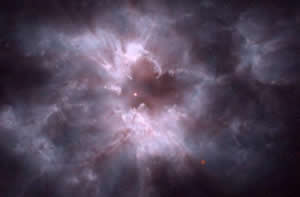
When stars like our own sun die they will become White Dwarfs. As a star like our sun is running out of fuel in its center it grows into a red giant. This will happen to our sun in 5 Billion years. The
...more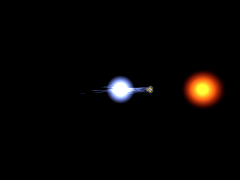
What's in a Name: Arabic for "head of the demon" Claim to Fame: Represents Medusa's eye in Perseus. A special variable star that "winks" every 3 days. Type of Star: Blue-white Main Sequence Star, and
...more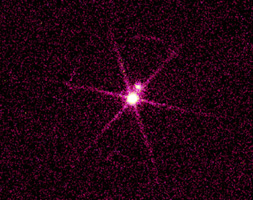
What's in a Name: Nicknamed the "Pup" because it is the companion to Sirius, "the Dog Star" Claim to Fame: Highly compressed white dwarf remnant. Density about 50,000 times that of water. It has approximately
...more


